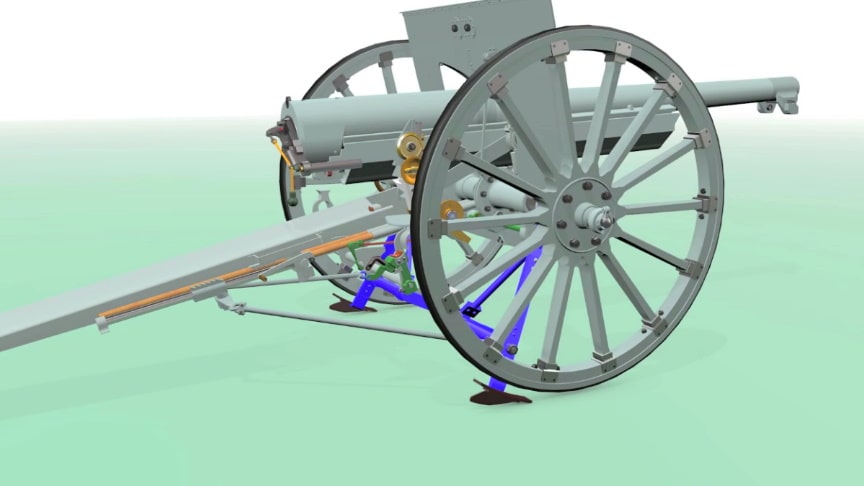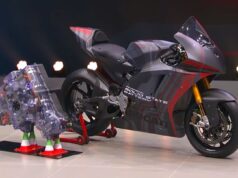The French 75 is widely regarded as the first modern artillery piece. It was the first field gun to include a hydro-pneumatic recoil mechanism, which kept the gun’s trail and wheels perfectly still during the firing sequence. Since it did not need to be re-aimed after each shot, the crew could reload and fire as soon as the barrel returned to its resting position.
source/image(PrtSc): vbbsmyt
In typical use the French 75 could deliver fifteen rounds per minute on its target, either shrapnel or high-explosive, up to about 8,500 m (5.3 mi) away. Its firing rate could even reach close to 30 rounds per minute, albeit only for a very short time and with a highly experienced crew.
This animation shows the actions necessary to prepare the gun from its ‘travelling’ state to operational state. The carriage has to be ‘locked’ into a fixed position and levelled. The operation of shrapnel shells depends upon setting a time fuse to explode the shell just in front of an attacking force, to shower them with balls, and demonstrates the French Débouchoir mechanical fuse setter that allowed time fuses to be set rapidly and accurately.
Advertisement
The liquid(oil) and air (pneumatic) recoil mechanism used a ‘floating piston’ – on one side hydraulic oil and on the other compressed air. The design must keep these two separated while allowing the free piston to move rapidly. The French design laid great emphasis on seals made of silver – being soft enough to conform to the sleeve housing, but as reported by the US when they started manufacturing the 75mm, the key element was highly precise machining of the sleeve housing the free piston.











